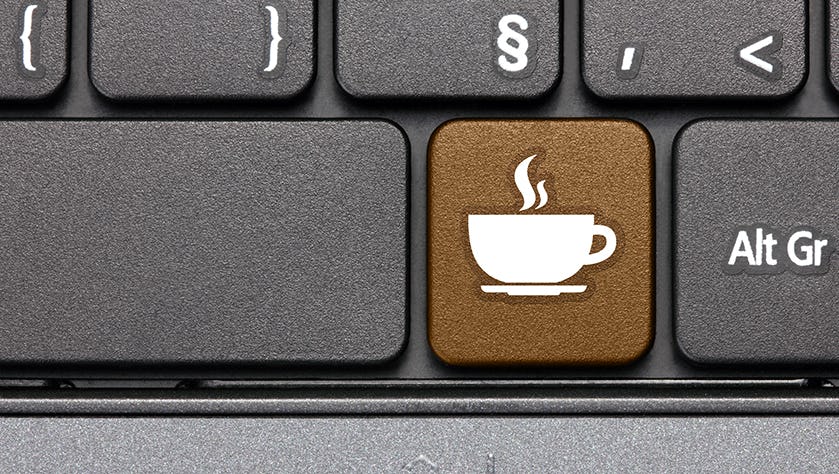
Spending extended periods using a laptop can be bad for your posture but here are some ideas to help prevent injuries and RSI among desk workers
With workdays increasingly spent in front of a laptop, the toll on our bodies is worsening – from eye strain and back ache, to sore wrists and burning necks.
Humans were never designed to be sedentary for the majority of their lives, but this is currently how we are spending our time. According to a survey of 2,000 Britons commissioned by Vision Direct in 2020, the average person will spend 34 years of their life staring at screens.
For ‘plugged-in’ professionals, there is a profound need to change the way we interact with technology. Put simply, we need to stop being glued to keyboards because this undermines our flexibility, leads to weight gain, and even causes repetitive strain injuries (RSIs).
Reprogramme your physique
Part of the problem with the laptop lifestyle is the delineation between time spent ‘working out’ and simply ‘working’. Why not integrate them?
Free to access, Workrave software suggests exercises to do during breaks, such as finger stretches, but there is no reason why you can’t up the ante and do some high-intensity interval training on the hour, every hour for example.
Doing as many push-ups and sit-ups as you can in one go is also a great way to build up strength using your own body weight – you could easily pop into a vacant meeting room to fit in a set, or do it in your living room when working from home.
Make better use of your commute time
RSI is a particular problem for full-time home workers, as they don’t travel to a workplace, which at least gets people moving for a portion of the day (especially if it’s a walk or cycle – driving doesn’t count).
Given that many people find commuting every day tiring, hybrid working (which lets people combine home working with time spent in an office or a shared coworking space) offers an ideal solution in that it can reduce the number of hours spent travelling over the course of a week, leaving more time to schedule an early morning swim or end-of-day Pilates class. Alternatively, making use of a shorter commute to walk or cycle to a local coworking space is a great opportunity to inject some exercise into your daily routine.
Keep moving
Wherever you happen to be based, taking regular time away from your computer is a great way to combat fatigue and boost productivity. Workrave flashes reminders on your screen to take 30-second ‘micro-pauses’ and ten-minute breaks to move around every 45 minutes.
It also monitors your keyboard activity so it knows if you have stopped working to go into a meeting, for example, and can freeze your device to ensure you log off.
Configure your work environment
During lockdown, many remote workers’ posture suffered because of inadequate furniture, which is typically part of a company’s duty-of-care policy when people are in an office.
But a lot of people haven’t got a proper home office set-up, especially lower-income young people who live in house shares and have neither the space nor the resources. (Some workers have to spend their day balancing a laptop on a pile of books on their bed, which is a disaster in terms of health.)
Making use of a local co-working space can help break up the week and get you out and about – plus, Spaces locations are guaranteed to be equipped with ergonomic chairs and adjustable-height desks…not to mention the high speed internet.
Enjoy this? You might also like these Spaces magazine stories:
Share this article
 Read now IWG expands its network with launch of luxurious new workspace: Signature Manhattan
Read now IWG expands its network with launch of luxurious new workspace: Signature Manhattan
 Read now Six steps to successful ‘deep work’ in a world of distractions
Read now Six steps to successful ‘deep work’ in a world of distractions